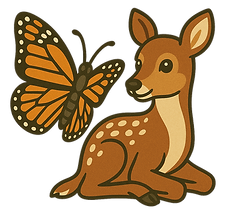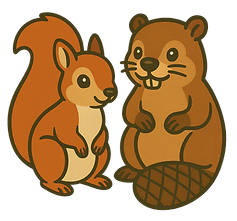top of page

Explore with Willy
Discover and ignite your curiosity about nature



Warm up by the fire this winter
What better way to warm up a winter day than sitting by a roaring fire. With a little know-how and help from a responsible adult, you can build and start your own fire to add warmth to a cold winter day.


Bundle up and celebrate the winter solstice
Cold weather is no reason to stay indoors. Make a plan to spend some time in the woods and enjoy the longest night of the year.


This playlist is a hoot: Learn owls' songs
Eight owl species call Will County home. And most of our local owls are nocturnal, so seeing them is a real treat. More often than not, we know owls are nearby because we hear them singing and calling. But owls don’t all sound the same. They don’t even all hoot. Each species has its own unique song.


A local spin on a classic Christmas carol
You probably know the classic carol "The Twelve Days of Christmas," but we are putting a local spin on it by featuring birds we see locally.


Not a duck: Get to know the American coot
The American coot is far from one of the most well-known waterfowl out there, but winter is when its presence really becomes known. An American coot. (Photo via Shutterstock) American coots are dark, duck-like birds that are about 15 inches long. Read the five facts below to get more familiar with this adorable waterfowl. Not a duck Although American coots look like ducks, they are part of a group a marsh birds called rails. The rail family is diverse and consists of many


Coyotes are all around us — even in cities
Coyotes are an important part of the ecosystem, and their presence across Illinois is beneficial. Their main ecosystem role is keeping the population of small mammals like rodents and rabbits in check.


Wild Relatives: The regal white-naped crane
The white-naped crane lives far from the United States, but it might remind you of our local crane species.


Fall is full of color — if you know where to look
With their shades of pink, purple, yellow and white, spring wildflowers usually get the credit for bringing the most color to the preserves. And while their bright colors are beautiful, the autumn season is full of color too! After the leaves start to fall, those colors are not as bright and may be more subtle, but they bring no less beauty to the preserve. (Photo by Glenn P. Knoblock) In fact, this is one of the best times of year to get outside and count the colors! While


Where do honeybees go in winter?
Ever since the first hunter-gatherers sat beside a buzzing log and got a whiff of a sweet honey coming from within, humans have been managing and keeping honeybees. Beehives in winter. (Photo via Shutterstock) The honeybee got its common name from its scientific name, which is Apis mellifera . In Latin, Apis means “bee,” and mellifera means “honey-bearing.” Who’s in the hive? A beehive consists of three types of bees: queens, workers and drones. The first and most important
Hike into the activity hub
Ready for an adventure? Our explorer guides and scavenger hunts are a fun way to navigate the outdoors and will help you spot cool things in nature that might go unnoticed.

bottom of page







